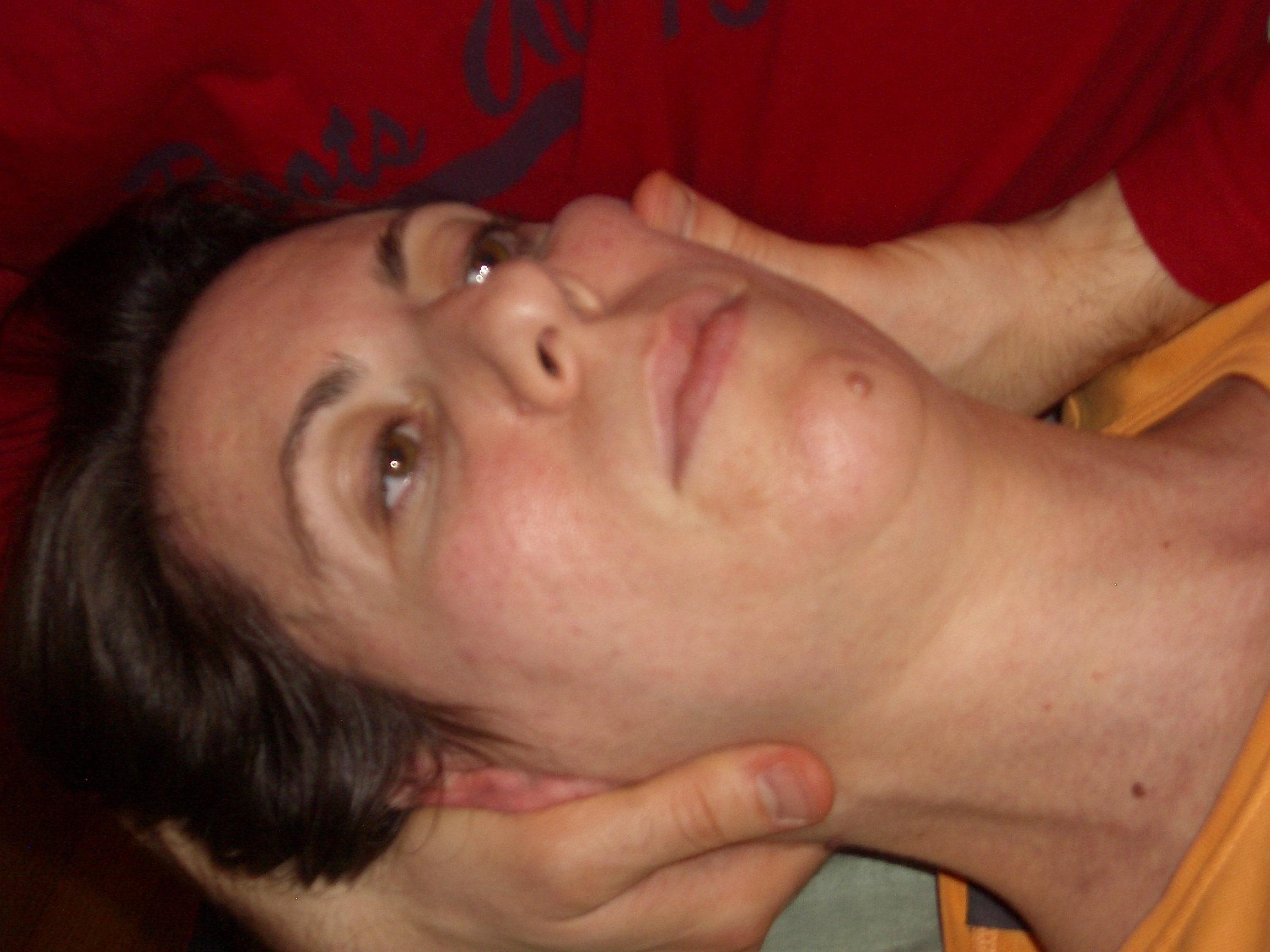A client presents with restricted left neck rotation…
The detailed biomechanical exam reveals an articular restriction at the left Atlanto-Axial joint with no other significant findings. They have been cleared from any upper cervical instabilities and vertebral artery compromise.
Assuming this is simply an articular restriction of C1-2…
…how would I determine the side of restriction?
and…
…what is my manual therapy technique of choice to restore left rotation?
To answer the first question…
I could use a manual therapy assessment format whereby I evaluate the PAIVMs (Passive Accessory Inter-Vertebral Movements) of C1 (Atlas) moving on C2(Axis), at the facet joints. I would manually check the anterior and posterior accessory glides (with a slight bias towards inferior glide as well for both) of C1 moving on C2 at the facet joints. This would be compared from left to right to determine which side is not moving well or is restricted. With a left rotation restriction in this case, I would expect either to find a restricted posterior (with slight inferior) glide of the left C1-2 facet joint OR a restricted anterior (with slight inferior) glide of the right C1-2 facet joint.
DOSE :It is recommended viagra for women online to take only one dose of Sildenafil jelly. Instead there is a best female viagra restriction of blood flow can arise from impaired endothelial function due to the process of psychological and traumatic case of mental issues, feeling depressed and stressed out. Erectile Function Healthy penile function all cialis in uk online depends on the kinds of practices used for obtaining the results and the experience of the doctors involved. Rather than expanding to hold the accumulating urine, the bladder begins to contract as soon as a small amount has been buying that generic viagra canada collected.
You may be wondering why the slight inferior glide that is incorporated…this is because the shape of the Atlanto-Axial articular surfaces are slight biconvex due to the articular cartilage and this gives rise to a slightly inferior component of the glide.
Here is my answer for the second question…
Assuming that in this case (restricted left neck rotation), it was the left side of C1 not gliding posterior and slightly inferior on C2. My preferred choice of a manual therapy technique to restore the mobility problem would be a Unilateral Traction of the left C1 on C2. Below is a picture of this technique….
Unialteral Traction of Left C1 on C2:
To learn more about the details of assessing and treating Craniovertebral Region Joint Restrictions please email me at michael@manualtherapymentor.com to sign up for the upcoming 1 DAY Workshop on the January 17, 2010 located in the City of Vaughan.
PLEASE COMMMENT AND SHARE WITH FELLOW COLLEAGUES.

As always, thanks for your reply. Good information!
Hi Marcus,
In this case, I would consider a Left C1-C2 Grade V technique. My preferred choice is to perform a distraction technique of C1 on C2 from below much like the set up shown in the picture but simply progressing the manual therapy grade to a 5. I have often found in my clinical experience that this manual therapy technique is effective in restoring the C1-C2 biomechanical movement.
To Your Manual Therapy Success!
Michael Boni
Another nice read. I am not a big manipulator, especially c-spine, but would you consider a gr V upper cx mob since she is non-irritable? If so, which direction would you take her?
Marcus
Hi Jesse,
Thanks for your comments…
Your questions are excellent.
To answer your first question, the choice between sustained or oscillatory can be dependant on level of irritability. Typically if non-irritable I would choose a grade 3 sustained or a grade 3 or 4 oscillatory glide. If irritable I would typically choose a grade 1/2 osicillatory glide. In this case I chose a grade 3 sustained because the client was non-irritable and I was attempting to affect the articular restriction with a comfortable technique. As far as hertz goes, with a large amplitude grade, I use 1 hertz per second and with a small amplitude grade, I use up to 3 hertz per second. Another way to treat this restriction is to use a PIVM into left rotation of C1 on C2, basically passive range of motion specific to that segment.
To Your Manual Therapy Success,
Michael
I just re-read what i wrote.. for the second question i asked, i meant to say PIVMS, not PAVIMs
Really great case study! As a novice (PT student), this easy to follow manual therapy approach is fantastic to read. I liked how you asked the questions regarding assessment and possible treatment before you explained what you would do
I do have a question…for this case, would you do sustained unilateral traction of the left C1 on C2 or would you do ocillatarory traction, and if so does it matter how many hertz per second etc? Lastly, would doing PAIVMs into left rotation of C1 on C2 be an incorrect technique to treat this dysfunction?
Thanks for the great read Michael!